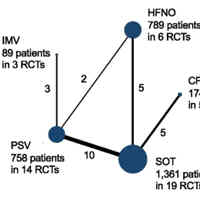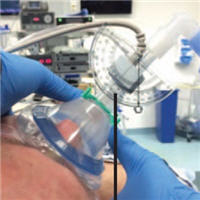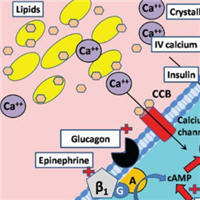Tag: oxygenation

Respiratory Drive in Sepsis and Septic Shock Patients: Modulation by High-flow Nasal Cannula
Patients with sepsis and septic shock of extrapulmonary origin present elevated respiratory drive and effort, which can be effectively reduced by high-flow nasal cannula. 25 nonintubated patients with extrapulmonary sepsis... read more

Ventilation in Patients with Intra-abdominal Hypertension
The incidence of intra-abdominal hypertension (IAH) is high and still underappreciated by critical care physicians throughout the world. One in four to one in three patients will have IAH on admission, while one out of... read more

Intubation Practice and Outcomes Among Pediatric Emergency Departments
While tracheal intubation (TI) characteristics vary between pediatric Emergency Departments and ICUs, outcomes are similar. Shock and limited mouth opening were independently associated with adverse TI events in the Emergency... read more

High-Flow Oxygen Therapy vs. Conventional Oxygen Therapy on Invasive Mechanical Ventilation in COVID-19 Patients
Among patients with severe COVID-19, use of high-flow oxygen through a nasal cannula significantly decreased need for mechanical ventilation support and time to clinical recovery compared with conventional low-flow oxygen... read more

Non-invasive vs. Invasive Respiratory Management Strategies in AHRF Patients
When performing non-invasive ventilation among patients with de novo acute hypoxaemic respiratory failure (AHRF), it is important to avoid excessive tidal volume and lung injury. Although pressure support is needed for... read more

Oxygenation Responses Mechanisms to Proning and Recruitment in COVID-19 Pneumonia
In unresolving COVID-19 pneumonia, the respiratory mechanics and the gas-exchange response to prone positioning and recruitment largely depend on the following two factors: perfusion dysregulation and the amount of consolidated... read more

The Pulmonary Artery Catheter: A Solution Still Looking For a Problem
In 1970, Jeremy Swan, William Ganz, and colleagues published their seminal paper “Catheterization of the heart in man with use of flow-directed balloon-tipped catheter”. Few devices in our specialty have generated more... read more

No Extra Risk For Transferring ECMO COVID-19 Patients
Previous experience has shown that transporting patients on extracorporeal membrane oxygenation (ECMO) is a safe and effective mode of transferring critically ill patients requiring maximum mechanical ventilator support to... read more

High Flow Nasal Oxygen: A Rising Star Waiting To Be Discovered
High flow nasal oxygen therapy (HFNO2) is gaining popularity of late and rapidly recognised as new oxygen therapy in the treatment of respiratory failure, and the fame exploded exponentially after the COVID-19 pandemic. HFNO2... read more

Head Rotation in Anaesthetised Apnoeic Patients Significantly Increases Mask Ventilation Efficiency
Head rotation of 45° in anaesthetised apnoeic adults significantly increases the efficiency of mask ventilation compared with the neutral head position. Head rotation is an effective alternative to improve mask ventilation... read more

Ventilator Management: A Pre-Hospital Perspective
The goal of this book is to provide the most up to date information on mechanical ventilation based on current research, evidence based practice and my experiences as a flight paramedic and educator. A comprehensive look... read more

Interhospital Transfer of COVID-19 Patients Treated with High-flow Nasal Oxygen Therapy
At the start of the COVID-19 pandemic, early intubation was recommended on the basis of worldwide observations of severe hypoxemia. However, some patients were ultimately able to benefit from high-flow nasal cannula (HFNC)... read more

Approach to the Critically Ill Poisoned Patient
Toxicology histories are notoriously unreliable. Any available medical records, especially medication lists. Timing & amount of ingestions. Immediate vs. sustained-release formulations. Consider inquiring specifically... read more

Understanding Brain Injury in Pediatric ECMO
Brain injury is frequent in extracorporeal membrane oxygenation patients, although the majority of survivors have favorable neurocognitive outcomes. More research is needed in order to understand the etiology of such... read more




